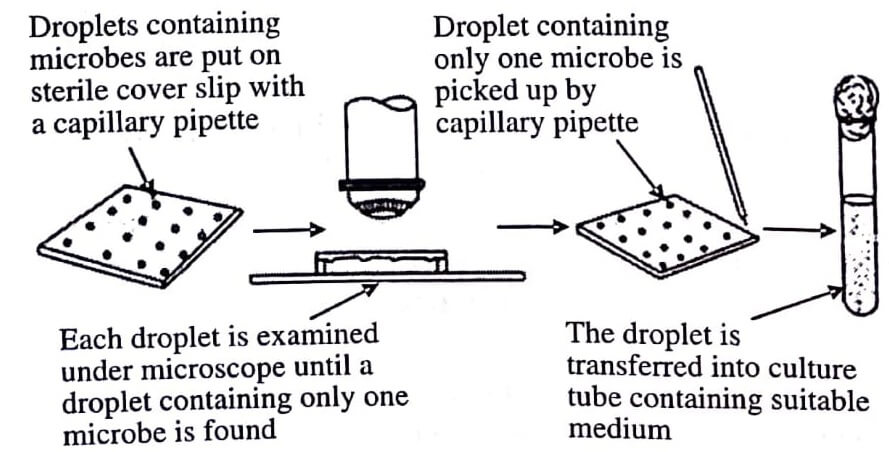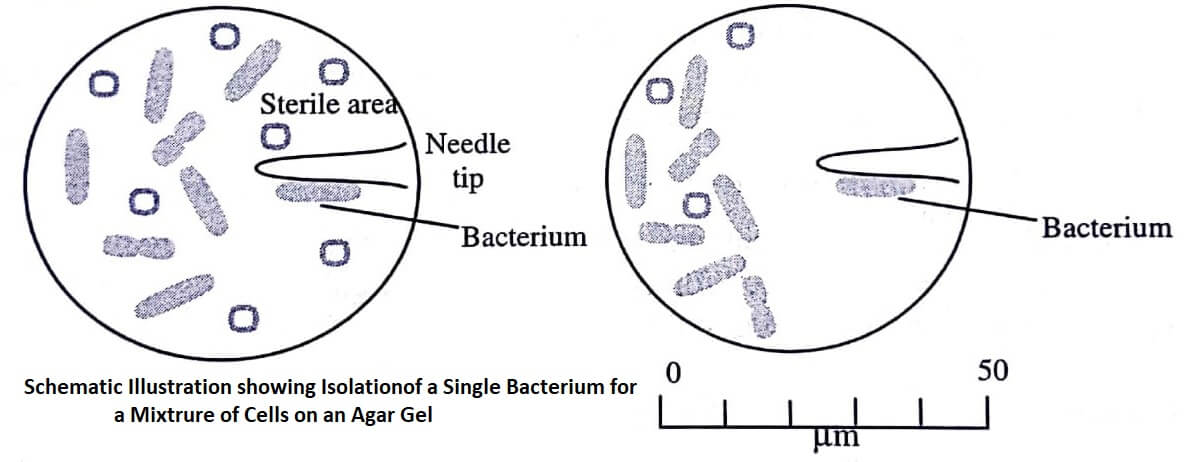In this method, an individual desired cell is picked up from the mixed culture and allowed to grow. For this purpose following two methods are used:
Capillary Pipette Method : In this method (figure), a few small drops of a dilute culture medium are placed on a sterile glass-cover slip using a sterile pipette drawn to a capillary.
Each drop is then microscopically examined until a drop containing only one microorganism is found. This drop is picked up using a sterile capillary pipette and added to a fresh medium, where the individual microorganism starts multiplying to yield a pure culture.

Micromanipulator Method : A single bacterial cell can be picked from a mixed culture by using the device ‘micromanipulator’ under the microscope.
The micromanipulator offers the advantage of controlling the movements of a micropipette or a microprobe (a fine needle) to its operator, for isolation of a single cell (figure). The use of a microscope shows the point where the microprobe touches the agar gel close to a bacterial cell, thus the microbe floating in the small amount of water exude from the gel.
Next, the microscope stage is moved to the left, while the microprobe remains fixed; this allows the bacterium to follow the probe and become separated from the other cells. The agar block is subsequently dissected and the small piece containing the isolated bacterium is transferred to a sterile culture medium.

The advantages of this method are that the cultures are obtained from a single cell and strains within the species can be obtained. The disadvantages are that the equipment is expensive, its operation is tiresome, and it requires trained operators, thus this method is used in highly specialised cases.
| Read More Topics |
| Isolation method for pure culture of bacteria |
| Morphological classification of bacteria |
| Gram positive and gram negative cell wall |
| Ultrastructure of bacterial cell |





